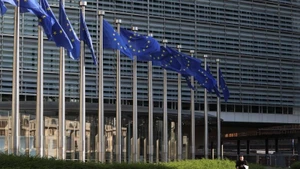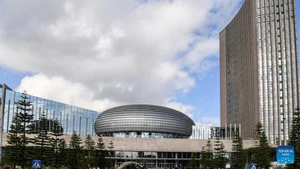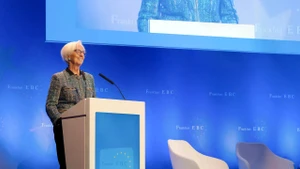Although the US debt ceiling issue has made positive progress, reducing many risks to the world economy, there are still factors that cause worry about growth. The US Federal Reserve (FED) has forecast that the world's leading economy will have a slight recession this year, while the International Monetary Fund (IMF) believes that China's economic growth will slow down in the medium term. Germany has officially entered a technical recession after data showed the growth in Europe's largest economy shrank for two consecutive quarters.
Over the past several months, high inflation and energy prices and congested supply amid the decline of both exports and consumption decline have cast a shadow over the German economy and caused fluctuations that are different from the normal law of economic development. The impact of all aspects by the COVID-19 pandemic and the conflict in Ukraine has been pushing the German economy to the brink of crisis. The central bank of Italy (BoI) said the country’s economy and Europe had been greatly impacted by the conflict in Ukraine, causing a decline in consumer confidence.
In his economic assessment report for 2022, BoI Governor Ignazio Visco said the crisis in Ukraine impacted energy prices, leading to the European Central Bank (ECB)’s decision on raising interest rates. According to Ignazio Visco, the Ukraine conflict is a turning point in international relations, which has severely affected world growth, inflation and trade. As inflation rises, global growth slows amid economic and political uncertainty.
Japan's Nikkei Newspaper has recently published an article stating that, due to the weakening of expectations for China's economic recovery, the prices of key commodities, including copper, fell by 20-30% off this year's peak. Copper in particular has been widely applied in many industries, including infrastructure, automobiles, household electrical products, etc., so copper price fluctuations have been closely monitored. The sharp drop in copper prices reflected market concerns over a slowdown in China's economy, which accounts for 60% of global copper demand.
In the US bond market, an anomaly in short-term yields above long-term yields was known as a "yield inversion". The prolongation of this yield inversion is considered the signal of the longest recession warning in 42 years. A comparison of two-year treasuries and 10-year US treasuries revealed that, as of May 26, the yield inversion had lasted 226 days, the longest on record over the past 42 years.
The yield spread between the 3-Month Treasury Constant Maturity and 10-Year Treasury Constant Maturity widened to -1.9% at one point in early May. The Federal Reserve Bank of New York calculated that the probability of a recession in the US is 68%, based on the yield spread, higher than before the Lehman Brothers crisis and the information technology bubble.
The situation of shipping with low freight rates reflected the weak consumption power of Europe and the US. According to the Shanghai Shipping Exchange, spot rates from Shanghai to the US West Coast in the fourth week of May were 1,398 USD for a 40-foot container, from Shanghai to Europe was 859 USD for a 20-foot container, down 82% and 85% year on year, respectively. Some container shipping businesses said this is an unprofitable price.
The reason for the slowdown in freight transport is the accumulation of excess inventory in the retail industry in Europe and the US. The supply chain chaos caused by the COVID-19 pandemic forced retail businesses to secure inventories, while consumption growth slowed down due to inflation. In China, the trend of iron ore and coal imports weakened, and freight tonnage supply and demand slowed.
According to experts, the optimistic signs in the first months of the year have given way to a more realistic feeling. The decline in purchasing power and the number of industrial orders, as well as the impact of the strongest monetary policy tightening in decades, especially the US economy forecasted to shrink, have created a weak economic cycle and its impact on global growth.
















